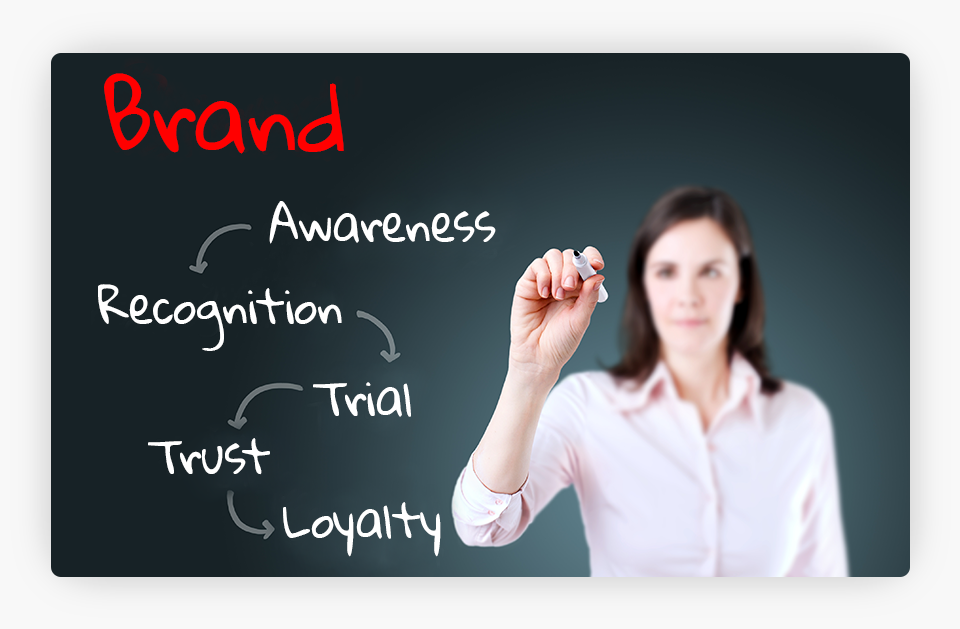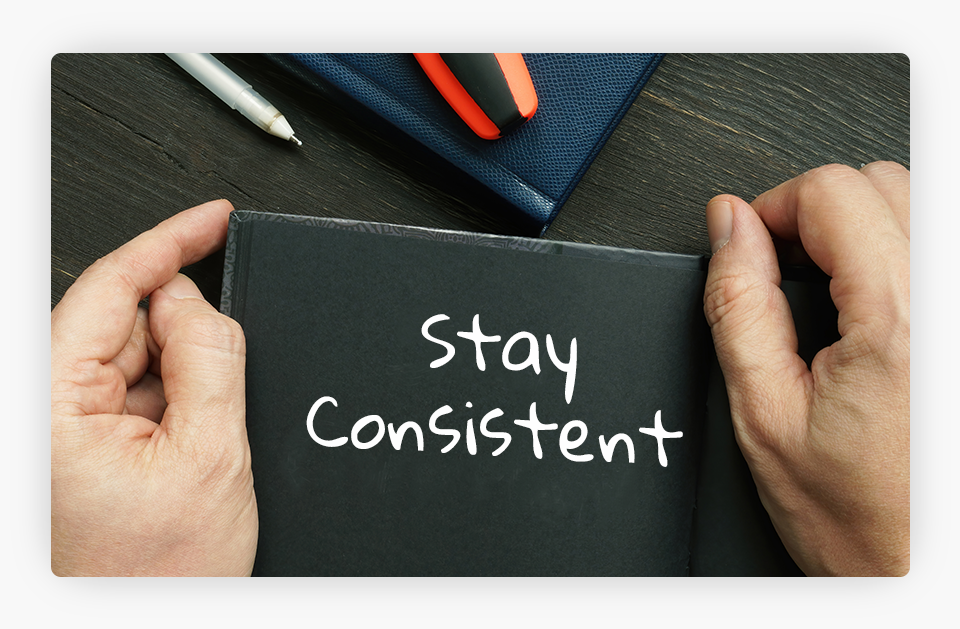We can’t send you updates from Justia Onward without your email.
Unsubscribe at any time.
Consistency is the foundation of successful branding efforts. Check out this post to learn more about why consistency matters and get a few tips on how to increase consistency in your law firm’s marketing efforts.
You have likely heard the expression “consistency is key” in various circumstances throughout your life. Children often hear this phrase when they are learning a new hobby, such as art or sports, in reference to practicing something over and over to achieve success. Adults trying to develop a new habit, such as a daily workout, often encounter this expression as they work on integrating that practice into their routines. Professionals hear the expression in their offices as they implement new programs and processes. People use the phrase to refer to strong communication. You get the idea.
With branding, the expression also holds true. Consistency is key. To some extent, consistency is everything. Keep reading to learn more about the importance of consistency and some key areas of your marketing strategy where it matters most.
Related Post: 6 Key Brand Assets Every Law Firm Should Consider Having
Why Does Consistency Matter?
Brand consistency is the practice by which a business, such as a law firm, continuously delivers messaging in line with the brand’s identity, values, and strategy. When you prioritize brand consistency, you are delivering messages and visuals to potential clients in a similar, repeated way.
As familiar as you may be with the general importance of consistency, you may also wonder why consistency matters in branding. The answers may be simpler than you think.
Expose Your Audience to Repeated Messaging

Brand recognition or brand awareness is directly connected to the awareness consumers have of a particular brand in various scenarios. It is important because you want your business to be top of mind for that consumer whenever they require your services.
For example, the Coca-Cola company wants its products to be the first thing in consumers’ minds when they think about drinking a soda, rather than a competitor such as Pepsi. Similarly, Coca-Cola wants its consumers to recognize its logo and products in vending machines, at concession stands, in stores, and at restaurants.
Law firms are just like Coca-Cola in this regard. You want potential clients to think of your firm first when they need legal services. For example, if you are a car accident attorney, when someone is in an accident you want to be the first lawyer in his mind when he considers seeking compensation. Likewise, you want potential clients to recognize your law firm. You want them to be reminded of your law firm when they see your office location, any advertisements you may run, and your presence at community events.
Thus, consistency is key. By repeatedly exposing your target audience to your desired messaging, you build brand recognition. Likewise, exposing them to consistent brand assets builds an association in their mind between the more abstract elements of your brand and your law firm. Over time, this recognition becomes ingrained in their minds, which is exactly what your law firm wants to happen.
Build Trust With Potential Clients

Arguably the most important reason to prioritize brand consistency is building trust with your potential clients. As a lawyer, you likely understand that reputation is everything. Brand consistency helps build that reputation.
Through consistent brand assets, such as slogans, messaging, logos, etc., you ensure that your law firm identity is clear at all points of contact with your firm. This consistency increases the perception that your firm is professional and qualified to handle legal matters, creating a sense of safety and trust for potential clients.
Over time, trust in your brand develops into brand loyalty. If you want to be the law firm of choice for your clients and future clients, you need to create brand loyalty. Brand loyalty is certainly influenced by other experiences, such as customer service and client outcomes, but brand consistency is a big part of taking the first steps toward building trust and loyalty.
Take Advantage of Positive Object Association

People often develop mental associations with familiar objects. For example, if you always feel happy when you return to the same vacation destination or at peace in your favorite spot on the couch, this is likely due to the positive associations you have with that object. However, if you always feel stressed when you walk into a doctor’s office, you likely have negative associations with that object.
As your law firm builds a positive reputation in your community and with clients, you can also take advantage of the goodwill people may have for your practice by creating positive associations. Through brand consistency, you can ensure that people associate their positive feelings with your firm’s brand assets. You can use messages and imagery that evoke pleasant emotional responses, such as caring about your clients or taking the stress out of a stressful situation.
This makes your law firm more approachable and creates longer-lasting, more positive relationships with current and future clients.
Stand Out From Your Competitors

You certainly do not want people to confuse your law firm with your competitors. Instead, you want your own unique identity that is not impacted by the perception people may have of other firms in your area. Brand consistency is a way to ensure that you stand out from the crowd while avoiding any brand confusion with other firms.
For example, if your biggest competitor has chosen yellow for their brand color, but you have always used green for your brand color, suddenly introducing yellow into your law firm’s color palette may create a risk of confusion. However, by prioritizing brand consistency, you can ensure that you do not deviate from your standard greens.
Tips for Creating Brand Consistency
Now that you better understand the importance of brand consistency, we have a few tips and reminders you can consider as you build your law firm’s legal marketing strategy. Before we dive into our tips, however, please remember to check your local rules on lawyer advertising to ensure you will remain in compliance before you implement any of these brand consistency suggestions.
Always Use a Consistent Law Firm Name

You always want to refer to your law firm in the same manner on your marketing materials. For example, you might be using a DBA (doing business as) name or shortened brand name in your actual practice. Even many of the most well-known, large law firms are shortening their names.
Using your branded name consistently avoids confusion and ensures potential clients always know that they are dealing with your law firm at all points of contact with your brand. It is also important for key elements of your digital marketing strategy, such as NAP (name, address, and phone) consistency for Google Business Profiles (formerly Google My Business) and search rankings.
For example, if your law firm’s registered name is The Law Offices of Jane Jefferson but you practice under the name Jefferson Family Lawyers, then you will want to ensure that your website, PPC Ads, brochures, billboards, signs, business cards, etc. all utilize the Jefferson Family Lawyers name.
Likewise, if your law firm’s registered legal name is a long string of partner names (Doe, Smith, Parker, Jones, & Johnson), but you only use the first two in your logo, brochures, or marketing messages (Doe Smith), then you want to ensure you are consistently utilizing this branded short name, while only using your registered name on formal documents.
Related Post: Law Firm Branding: The Rise of the Shortened Law Firm Name
Remember the Small Stuff

If you have spent some time researching legal marketing or law firm branding, you likely already know you need to define the big stuff, such as a logo and color scheme for your law firm. However, do not forget to check out the small stuff either. Define a font – they’re more important than you think. Define styles you will use on your law firm website. Consider the types of images you will use in various marketing materials. Pay attention to the language on pages of your website you may not update as frequently as your homepage. All of these seemingly minor things can add up to have a big impact on your overall brand consistency.
Create a Style Guide for Your Firm

One of the best ways to maintain brand consistency is ensuring that the key members of your team understand your brand rules. For instance, you do not want a well-meaning staff member to order 10,000 brochures with the wrong logo or font size.
By creating a brand style guide or a brand book, you can ensure that your brand elements are defined in a unified place accessible to all team members. You can list the usage rules for logos, your full firm name, your primary colors and secondary colors, appropriate fonts for marketing materials, and any other brand assets. Because there are exceptions to every rule, you can also include guidelines on when it is acceptable to deviate from the standards defined in the style guide.
If you are looking for an online solution for your brand guide, you may want to consider a solution such as Brandfolder. Their Brandguide product can help you organize all of your brand assets into a unified, easily accessible place.
Develop a Branding Quality Assurance Team

Everyone makes a mistake from time to time. A quality assurance (QA) process helps reduce the frequency of errors by assigning a dedicated person, or group of people, to review a product before it is finalized.
You have likely experienced the phenomenon where a fresh set of eyes suddenly spots a typo in a pleading you may have missed or can see a case from a different angle. This same phenomenon occurs with branding projects through your QA team. The Branding QA team can review all brand assets before they are ordered and finalized to ensure consistency and compliance with your brand guidelines.
Final Thoughts: Why Do You Care?
In short, brand consistency helps drive more business to your firm by creating familiarity and trust with potential clients. It is a way to increase recognition of your law firm in the community and ensure the reputation you work so hard to build for your practice is always connected with your firm.
Need an example of law firm branding done well? Consider checking out this case study from O+Co., the creative strategists behind the revamp of the Skadden brand.